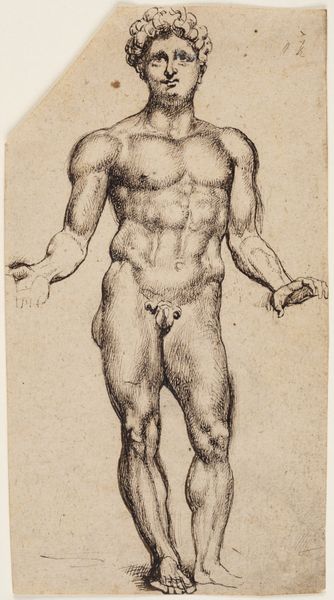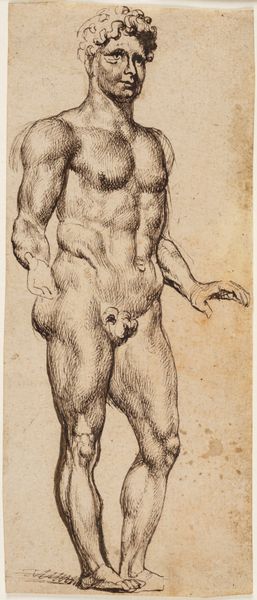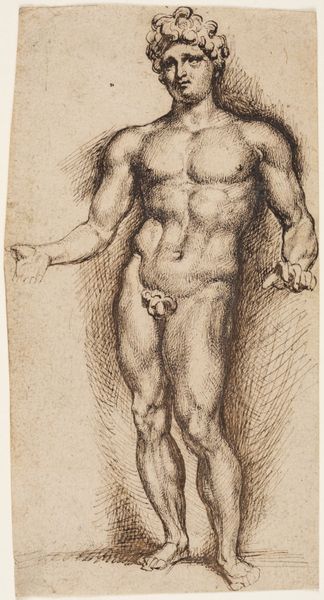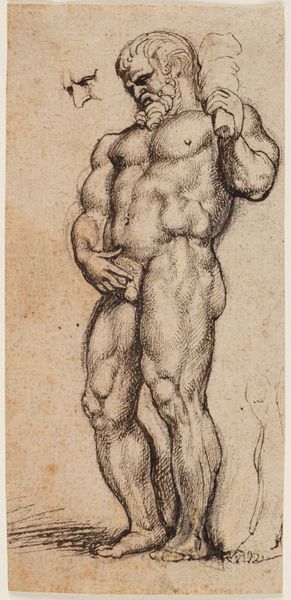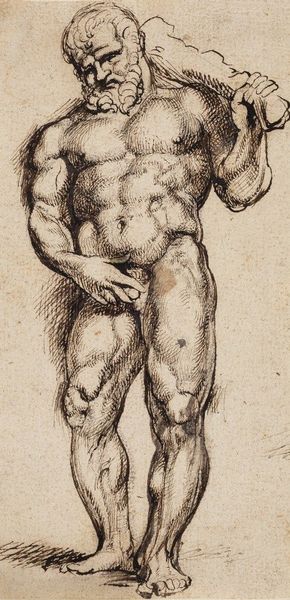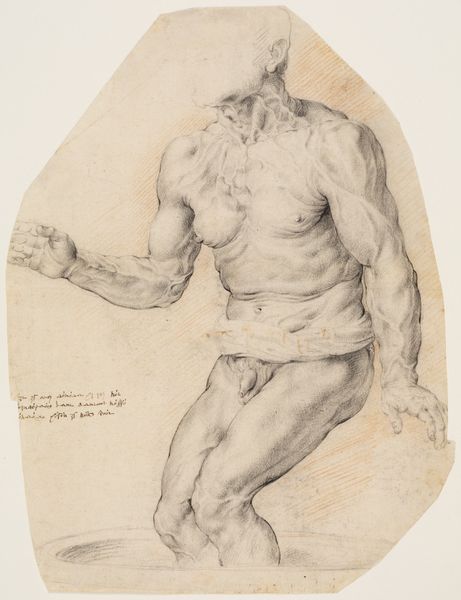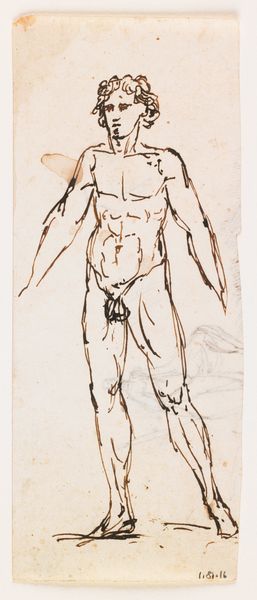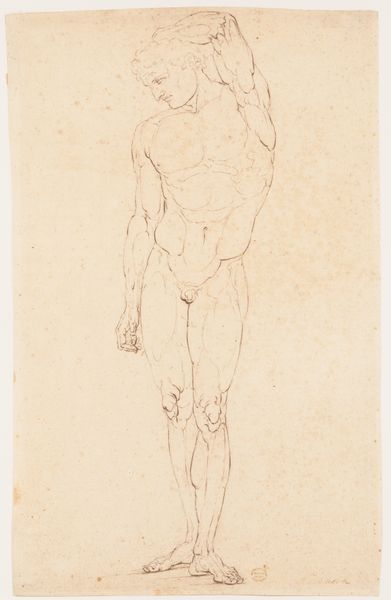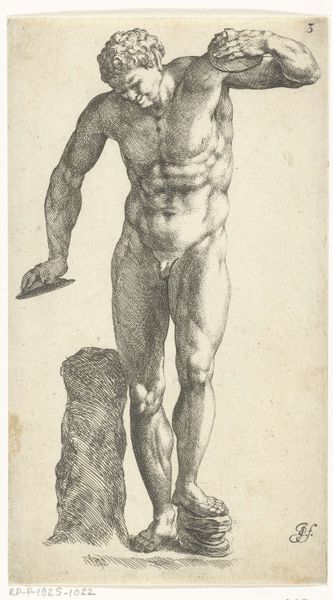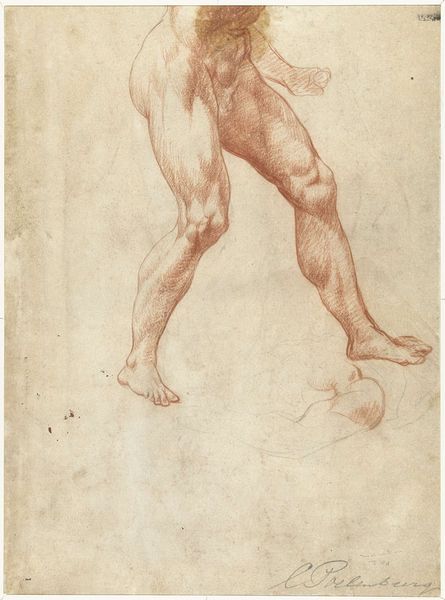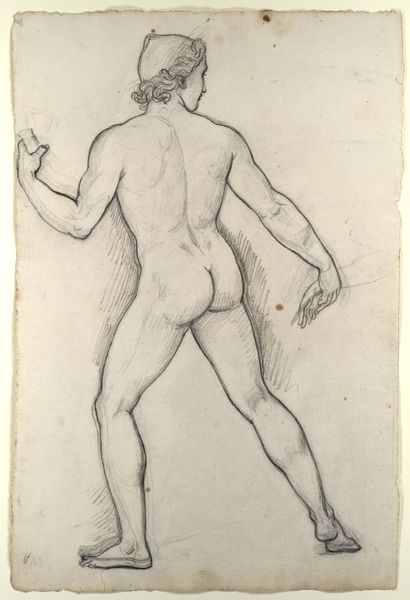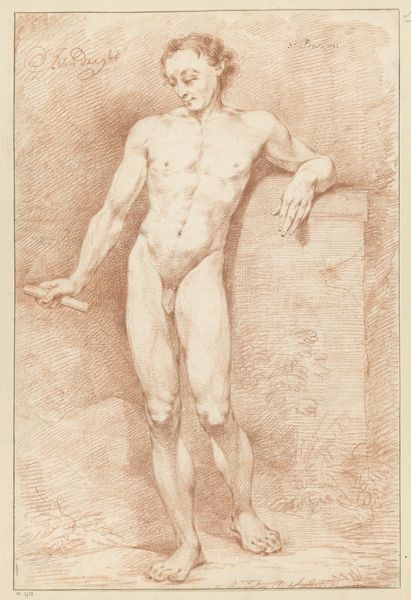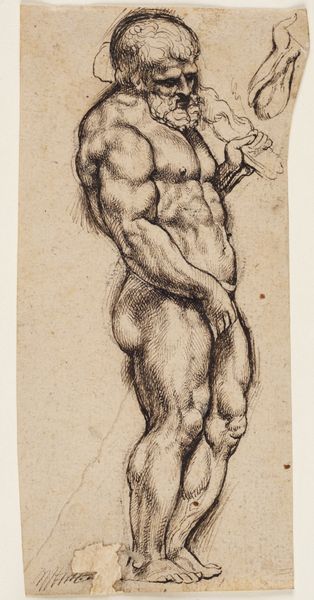
drawing, ink
#
drawing
#
figuration
#
ink
#
academic-art
#
nude
#
realism
Dimensions: 211 mm (height) x 114 mm (width) (bladmaal)
Curator: Here we have "Merkur," a drawing by Anthony van Dyck, created sometime between 1550 and 1650. It's rendered in ink and is currently held at the SMK, the National Gallery of Denmark. Editor: Immediately, the linework strikes me. It’s surprisingly delicate considering the subject matter. There’s a softness, almost a vulnerability, conveyed in the depiction of such a traditionally masculine figure. Curator: Indeed. Note the economical yet highly descriptive use of hatching and cross-hatching to model the figure's musculature. Van Dyck clearly understood anatomy, rendering the back muscles with incredible precision, wouldn't you agree? Editor: Undeniably skillful. However, what fascinates me is how this ink drawing contributes to the artist’s practice. Consider the material limitations—the pressure applied to the pen, the absorbency of the paper. Were these considerations integral to van Dyck’s vision? Was this possibly a study done to inform another artwork that would’ve come after? Curator: Precisely, the composition directs the eye with a subtle asymmetry, from the curve of the back to the outward extension of the right arm. We cannot fail to also notice the position in contrapposto, providing both stability and an inner dynamism which gives it the tension necessary for representing this athletic god. Editor: Shifting from formal concerns, it’s interesting to consider the social context of such depictions. Who was this intended for? Was it an exercise in anatomical accuracy, intended for an academic environment, or was there an element of pleasure, and even voyeurism, intended in displaying the male nude at that time? And how would he have dealt with the materiality involved when his model got cold and started to shiver? Curator: Those questions underscore how intertwined technique, reception, and even the quotidian aspects of artistic labor truly are! His approach demonstrates both mastery of academic conventions and also an intriguing play with light and shadow across the planes of the body. Editor: Absolutely. In fact, analyzing artistic processes as work emphasizes labor, skills and socio-historical contexts. What are the economic implications of representing an artwork featuring a nude figure? Curator: Thinking through materiality has highlighted aspects of craft and production I'd not considered previously in detail for this piece. Editor: Likewise, examining the composition allows us to trace those aspects that can make the representation appealing to an art consumer of the time.
Comments
No comments
Be the first to comment and join the conversation on the ultimate creative platform.
